As a factory manager, you constantly face pressure to increase output and cut costs. You identify a bottleneck in your steel wire packing line and decide a new rewinding machine is the answer. But a new fear creeps in. How will this massive, complex piece of equipment fit into your existing, finely-tuned operation? The thought of a new machine clashing with your current cranes, conveyors, or control systems is a nightmare. It could lead to extensive downtime, costly modifications, and the exact opposite of the efficiency you were hoping for.
To ensure a new steel wire rewinding machine is compatible with your existing material handling systems, you must conduct a thorough, three-part audit before purchase. This audit involves verifying mechanical integration points like physical dimensions and conveyor heights, confirming software and control system compatibility for data exchange, and planning for human factors like operator workflow and safety protocols. A successful integration depends on detailed planning that treats the new machine as part of a larger system, not as a standalone unit.
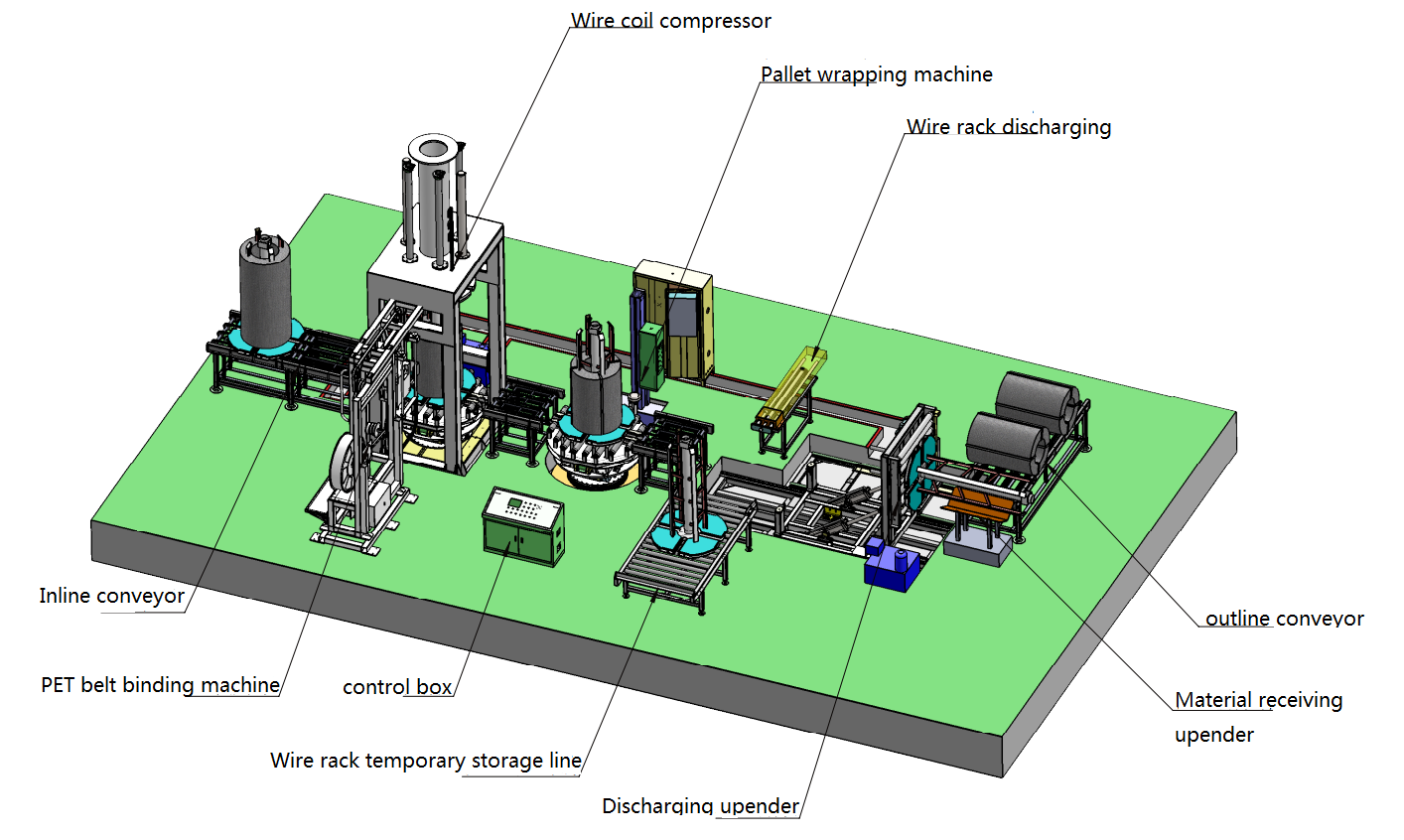
This might sound like a lot to handle, but it’s a process I’ve guided countless clients through. As an engineer who built my own packing machine factory, I know that overlooking these details is the fastest way to turn a promising investment into a major headache. The good news is that you can avoid these problems. Let’s break down the process step-by-step, so you can integrate your next machine smoothly and confidently.
What are the Key Mechanical Integration Points to Check First?
You've found a rewinding machine with the perfect specs, but you have a nagging feeling. Will it physically fit? Your factory floor is already packed, and your material handling system has been in place for years. Bringing in a new machine that doesn't align with your existing cranes or conveyors could halt production instantly. You would be forced into expensive, on-the-fly modifications, all while your production targets slip further away.
The most critical mechanical integration points to check are the machine's physical footprint, the infeed/outfeed alignment with your existing transport systems (like cranes and conveyors), and the compatibility of all utility connections such as power, compressed air, and hydraulics. These physical connections are the foundation of a successful integration and must be confirmed with precise measurements and technical specifications before any purchase is made.
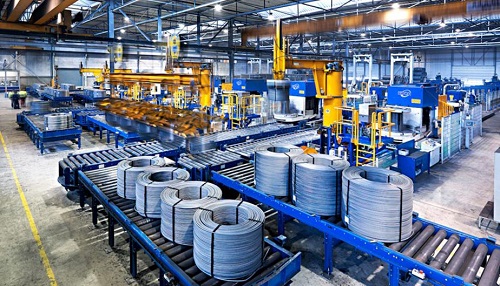
Dive Deeper: A Practical Checklist for Mechanical Compatibility
Getting the mechanical integration right is not about luck; it's about careful measurement and planning. I've seen situations where a factory manager, like Michael, bought a machine based on its performance datasheet alone, only to find it was 10 centimeters too tall for their gantry crane's clearance. That small oversight led to weeks of delays and costly structural changes. To prevent this, you need to think like an engineer and create a detailed checklist. Let's break down the essential areas.
Checking Physical Dimensions and Footprint
This seems obvious, but it’s where most mistakes happen. You need more than just the machine’s length, width, and height.
- Operating Space: How much extra room is needed around the machine for operators to work safely and for maintenance crews to access key components? A good supplier should provide a detailed layout drawing that includes these clearance zones.
- Transport Path: How will you get the machine from the delivery truck to its final position? Measure every doorway, corridor width, and corner on the path. I once had a client who had to knock down a wall because the machine’s main body couldn’t make a turn in their hallway.
- Foundation: Does the machine require a special concrete foundation due to its weight or vibrations? Your factory floor must be able to support the static and dynamic loads of the new equipment. Ask the supplier for a foundation plan and loading specifications.
Infeed and Outfeed Compatibility
This is where the machine meets your process. Any mismatch here creates a permanent bottleneck.
- Conveyor/Transfer Car Alignment: The height, width, and speed of your existing conveyors or transfer cars must match the machine's infeed and outfeed points. The transition must be seamless to avoid damaging the steel wire coils. For example, if your outfeed conveyor is too low, the coil could drop and damage its edges, leading to product loss.
- Crane and Hoist Integration: If you use an overhead crane to load or unload coils, check the compatibility of the lifting attachments. Does the machine require a C-hook, a grab, or another type of lifter? Is there enough vertical clearance for the crane to operate safely above the machine?
- Coil Orientation: How does the machine receive the coil and how does it discharge it? For example, does it take a coil with the "eye to the sky" and discharge it with the "eye to the side"? This must match the orientation required by the next step in your process to avoid extra, time-consuming handling steps.
Power and Utility Requirements
| A machine without the right power is just a large piece of metal. | Utility | Key Questions to Ask the Supplier |
|---|---|---|
| Electrical | What is the required voltage, phase, and frequency? What is the peak power consumption (kW)? | |
| Compressed Air | What is the required pressure (Bar/PSI) and flow rate (L/min)? Is the air required to be dry/oiled? | |
| Hydraulics | Does it have a self-contained unit? What type of hydraulic fluid is specified? | |
| Data/Network | Does it require an Ethernet connection for control or data transfer? What type of port? |
By methodically working through these mechanical points, you move from hoping the machine will fit to knowing it will. This detailed pre-purchase work is the first and most important step in protecting your investment and ensuring a smooth startup.
How Can You Align the New Machine's Software with Your Current Control Systems?
Your new rewinding machine is installed and running perfectly... as an island. It does its job, but it doesn't communicate with your factory's main control system (like an MES or SCADA). Your operators are now stuck manually entering production data, and you have no real-time visibility into the machine's performance. The "smart" machine you bought has created a dumb spot in your operations, and the dream of a fully connected, automated factory is slipping away.
To align a new machine’s software with your existing control systems, you must define the data exchange requirements and specify the communication protocol (like OPC-UA, Profinet, or Modbus) in the purchasing contract. This involves collaborating with the supplier's engineers to map out essential data points—such as production counts, cycle times, and fault codes—to ensure seamless integration with your plant-wide monitoring and control software.
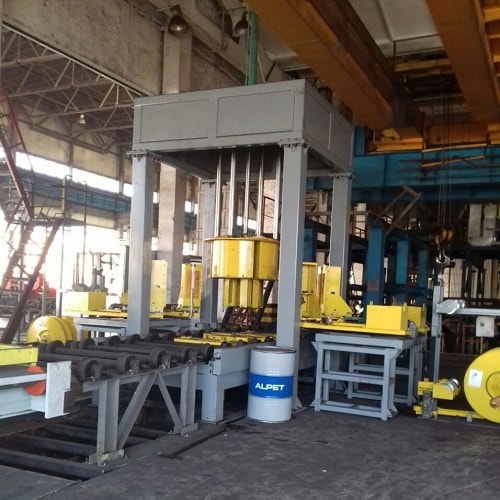
Dive Deeper: Bridging the Digital Gap in Your Factory
In today's manufacturing world, data is as important as the physical product. For a manager like Michael, who is responsible for overall plant efficiency, having isolated equipment is unacceptable. True operational excellence comes from a unified system where machines talk to each other and provide a clear, real-time picture of the entire production process. Let's explore how to make this happen.
Understanding Communication Protocols
Think of a protocol as the language machines use to speak to each other. If your factory speaks one language (e.g., Profinet) and the new machine speaks another (e.g., Modbus), they won't be able to communicate without a translator (a gateway), which can add complexity and cost.
- Identify Your Standard: Before you even talk to suppliers, know what communication protocol is the standard in your facility. Is it an Ethernet-based protocol like Profinet or EtherNet/IP? Or an older serial protocol like Modbus RTU?
- Specify the Requirement: Make this a non-negotiable point in your technical specification document. A reliable supplier should be able to offer their machine with various communication options to match your needs. Be wary of a supplier who says they can only offer one proprietary protocol.
Data Integration with MES/ERP Systems
A connected machine should do more than just run. It should feed valuable data to your higher-level business systems.
- Define Your Data Points: What information do you actually need from the machine? Don't just ask for "data." Be specific. Create a list of "tags" or data points that you want to monitor.
- Map the Data Flow: How will this data be used? Will it be used for real-time dashboards on the factory floor? Will it feed into your ERP system for inventory management? Understanding the purpose of the data will help you and the supplier design the most effective integration.
Here is a simple table outlining the kind of data you might want and its purpose:
| Data Point | Example Value | Purpose for a Factory Manager |
|---|---|---|
| Machine Status | Running, Stopped, Fault | Real-time OEE (Overall Equipment Effectiveness) tracking. |
| Production Count | 150 coils/shift | Monitoring progress against production targets. |
| Cycle Time | 90 seconds/coil | Identifying efficiency gains or slowdowns. |
| Fault Code | E-102 (Safety Guard) | Pinpointing recurring issues for preventative maintenance. |
| Material Consumed | 2500 kg steel wire | Feeding into inventory management and ERP systems for automatic reordering. |
Future-Proofing Your Control System
Your factory is not static; it will continue to evolve. The integration you design today should be ready for the challenges of tomorrow.
- Scalability: Choose open, modern protocols like OPC-UA. They are designed for interoperability and are the foundation of Industry 4.0. This makes it easier to add more machines or new software systems in the future without having to start from scratch.
- Remote Access: Discuss the possibility of secure remote access with the supplier. This can be invaluable for quick troubleshooting and software updates, reducing the need for an on-site technician visit and minimizing downtime. As a factory owner, I can tell you that the ability for my supplier's engineer to securely log in and diagnose a problem in minutes is worth its weight in gold.
Software integration is not an IT problem; it is a core operational requirement. By planning it with the same rigor as the mechanical installation, you ensure your new machine becomes a valuable, data-providing asset in your connected factory.
What Role Does Operator Training Play in a Successful Integration?
The new, automated rewinding machine is finally installed. It's mechanically sound and digitally connected. But production numbers are still low. You walk the floor and see operators struggling. They seem hesitant, using the machine at a slow pace, and you've already had a few minor errors due to incorrect operation. The machine has the potential to solve your bottleneck, but your team's unfamiliarity with it has just created a new one. The investment is at risk, not because of the technology, but because of the human element.
Operator training is a crucial, non-negotiable part of a successful integration because it directly impacts productivity, safety, and machine longevity. A comprehensive training program, provided by the supplier, ensures that your team can operate the new equipment efficiently, follow correct safety procedures, and perform basic troubleshooting, thereby maximizing the return on your investment from day one.
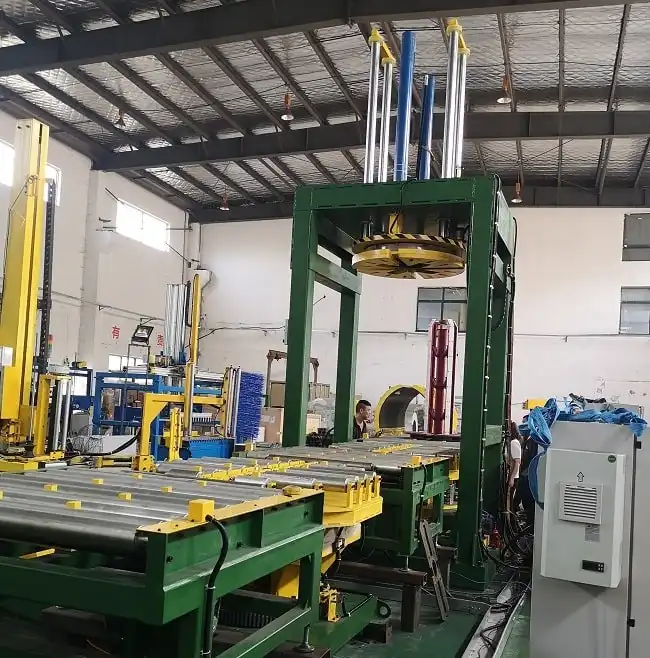
Dive Deeper: Turning Your Team into Equipment Experts
As someone who has run a factory floor, I can tell you this: the most advanced machine in the world is only as good as the person operating it. For a manager like Michael, who is concerned about safety and efficiency, overlooking training is a critical mistake. Investing in your people's skills is just as important as investing in new hardware. A well-trained team doesn't just run a machine; they own the process. They become your first line of defense against downtime and your source of ideas for continuous improvement.
The Operator's Role vs. The Technician's Role
Effective training recognizes that different team members need different skills.
- Operator Training: This should focus on the day-to-day operation. It must be hands-on and cover the entire workflow: starting up the machine, loading materials, selecting the right program on the HMI (Human-Machine Interface), monitoring the process, safely clearing minor jams, and performing the standard shutdown procedure. The goal is to build confidence and consistency.
- Maintenance/Technician Training: This goes much deeper. Your technical staff needs to understand the machine's mechanical, electrical, and pneumatic systems. Their training should cover preventative maintenance schedules, how to diagnose and fix common faults, the procedure for replacing wear parts, and how to read the electrical and mechanical schematics.
Building a Comprehensive Training Program
A single afternoon of training is not enough. A good training plan provided by your supplier should be a multi-stage process.
| Training Stage | When It Happens | Key Content |
|---|---|---|
| Pre-Installation | 1-2 weeks before machine arrival | Review of machine manuals, safety warnings, and basic operational theory. |
| On-Site Commissioning | During machine installation | Hands-on training with the supplier's technician. This is the most critical phase. Operators and technicians learn on the actual machine. |
| Post-Installation | 1-2 months after startup | A follow-up session to address any recurring issues, answer advanced questions, and reinforce best practices. |
| Refresher Training | Annually or as needed | Training for new hires or to update the team on any software or hardware upgrades. |
Measuring Training Effectiveness
How do you know if the training worked? You need to look for tangible improvements on the factory floor.
- Reduced Error Rates: Are there fewer operator-induced faults and alarms?
- Increased Throughput: Is the machine consistently meeting or exceeding its target cycle time?
- Improved Safety Record: Are there fewer near-misses or safety-related incidents around the new machine?
- Operator Confidence: Do your operators seem comfortable with the machine? Are they able to resolve minor issues themselves without immediately calling for a technician?
When you negotiate the purchase of a new machine, treat the training package with the same importance as the technical specifications. A supplier who offers a robust, multi-stage training program is a supplier who is invested in your long-term success, not just in making a one-time sale.
My Insights: Beyond the Machine - Finding a True Integration Partner
I’ve spent over 20 years in this industry, first as an engineer on the factory floor and then building my own packing machine company. I've been in shoes very similar to Michael's. I know the pressure of production targets, the constant push to improve safety, and the frustration of dealing with suppliers who disappear the moment the final payment clears. That experience has taught me one crucial lesson: when you're making a major investment like a steel wire rewinding machine, you are not just buying steel and code. You are looking for a partner.
A true partner understands that a machine's success is measured by its Return on Investment (ROI), not just its technical specs. They work with you to solve your specific problems—like production bottlenecks and safety hazards—and they provide the deep expertise and reliable support needed to ensure the equipment delivers real, long-term value to your business. This partnership is built on trust, shared goals, and a commitment that extends far beyond the initial sale.
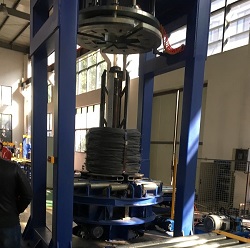
Dive Deeper: What to Look For in a Partner, Not a Peddler
I remember the feeling of signing a big check for a new piece of equipment. It's a mix of excitement and anxiety. You've done the calculations, and you believe this machine will improve your business. But there's always a risk. That risk is significantly lower when you work with someone who sees the world from your perspective.
They Speak Your Language: ROI and Efficiency
A salesperson will talk about features. A partner will talk about benefits. When I speak with a factory manager, I don't lead with machine speed. I ask about their cost per ton, their current rate of product damage, and their workers' compensation insurance costs.
- Look for ROI-focused discussions: A good partner will help you build a business case for the machine. They should be able to ask you the right questions to calculate potential savings in labor, reductions in product damage, and increases in throughput. If a supplier can't have this conversation with you, they don't understand your business.
- They understand your pain points: Do they listen to your challenges with manual wrapping or safety risks? A true partner, especially one with a background like mine, has seen these problems firsthand. We know that a machine that eliminates the need for an operator to manually handle a heavy coil is not just an efficiency tool; it's a solution to a major safety and insurance problem.
They Offer Expertise, Not Just a Product Catalog
You are an expert in running your factory. You need a supplier who is an expert in their machinery.
- Access to Engineers: You should be able to speak directly with their engineering team during the sales process. This is how you solve the complex integration issues we've discussed—the mechanical and software compatibility. A partner makes their technical experts available to you.
- Problem-Solving Mindset: I've helped clients redesign their entire end-of-line workflow, not just sell them a machine. Sometimes, the best solution involves changing the process around the machine. A partner isn't afraid to suggest this, even if it means selling you a smaller or different machine than you initially asked for. Their goal is to solve your problem, not just move a unit.
They Stand Behind Their Work: The After-Sales Promise
This is where trust is truly earned or broken. Michael's caution from past bad experiences is completely justified. The real test of a supplier begins after the installation is complete.
- Ask for References: Don't just ask for a list of clients. Ask to speak with a factory manager at a company similar to yours who has been running the machine for over a year. Ask them about service response times and spare parts availability.
- Clarify the Support Structure: What does after-sales support actually look like? Is it a call center, or do you have a dedicated contact? What are their guaranteed response times? Do they offer remote diagnostic support? These details should be clear and in writing.
When I started SHJLPACK, my mission wasn't just to build machines. It was to share the knowledge that allowed me to build a successful factory and help others do the same. Finding the right equipment is about finding a partner who shares that vision of success for your factory.
Conclusion
Ensuring a new machine works with your system requires careful planning of its mechanical, software, and human integration. Look for a true partner who will help you succeed.





